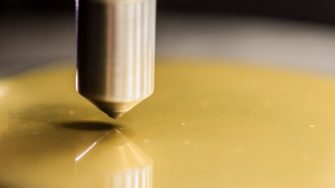- Home
- About us
- Study with us
- Our research
-
Student life & resources
-
Undergraduate program plans pre 2024
- Bachelor of Engineering (Materials Science & Engineering) (Honours)
- Bachelor of Engineering (Materials Science & Engineering) (Honours)/Master of Biomedical Engineering
- Bachelor of Engineering (Materials Science) (Honours)/Commerce
- Bachelor of Engineering (Materials Science & Engineering) (Honours)/Engineering Science
-
Undergraduate program plans 2024 onwards
- Bachelor of Engineering (Materials Science & Engineering) (Honours) New Program 2024 Onwards
- Bachelor of Engineering (Materials Science & Engineering) (Honours)/Master of Biomedical Engineering New Program 2024 Onwards
- Bachelor of Engineering (Materials Science) (Honours)/Commerce New Program 2024 Onwards
- Bachelor of Engineering (Materials Science & Engineering) (Honours)/Engineering Science New Program 2024 Onwards
- Postgraduate program plan
- Course outlines
- Important information for all coursework students
- Work integrated learning
- Careers and industries
- Student societies
- Exchange programs
- Life on Campus
-
Undergraduate program plans pre 2024
- Engage with us
- News and events
- Home
- About us
- Study with us
- Our research
-
Student life & resources
Undergraduate program plans pre 2024
- Bachelor of Engineering (Materials Science & Engineering) (Honours)
- Bachelor of Engineering (Materials Science & Engineering) (Honours)/Master of Biomedical Engineering
- Bachelor of Engineering (Materials Science) (Honours)/Commerce
- Bachelor of Engineering (Materials Science & Engineering) (Honours)/Engineering Science
Undergraduate program plans 2024 onwards
- Bachelor of Engineering (Materials Science & Engineering) (Honours) New Program 2024 Onwards
- Bachelor of Engineering (Materials Science & Engineering) (Honours)/Master of Biomedical Engineering New Program 2024 Onwards
- Bachelor of Engineering (Materials Science) (Honours)/Commerce New Program 2024 Onwards
- Bachelor of Engineering (Materials Science & Engineering) (Honours)/Engineering Science New Program 2024 Onwards
- Engage with us
- News and events

There are two principal methods of testing the hardness of a material – scratch testing and indentation testing.
Indentation testing can only be used on materials that undergo plastic deformation such as metals and thermoplastic polymers.
Scratch testing is therefore used for brittle materials such as ceramics.
Scratch testing
The hardness of a material can be determined based on Moh’s scale of hardness, which ranks a material based on a list of standard materials with known hardness.
The hardness of the material is ranked on the scale between the material it just scratches and the material that it fails to scratch.
 Moh's Scale of hardness
Moh's Scale of hardness
Indentation testing
There are a number of different methods of testing the hardness of a material through indentation. The three most commonly used are the Brinell test, the Vicker’s Diamond test, and the Rockwell test.
All three methods involve indentation of the material. The hardness is calculated by measuring the force applied and comparing this to some geometrical aspect of the indentation such as the surface area or depth.
Vickers Brinell Rockwell
(diamond) (ball) (cone)
Hold your mouse over the image to see the indentations that result from the three different tests.
When hardness indentation testing is done on an actual component it is often necessary to blend (grind) out the indentation to remove the stress concentration it produces
